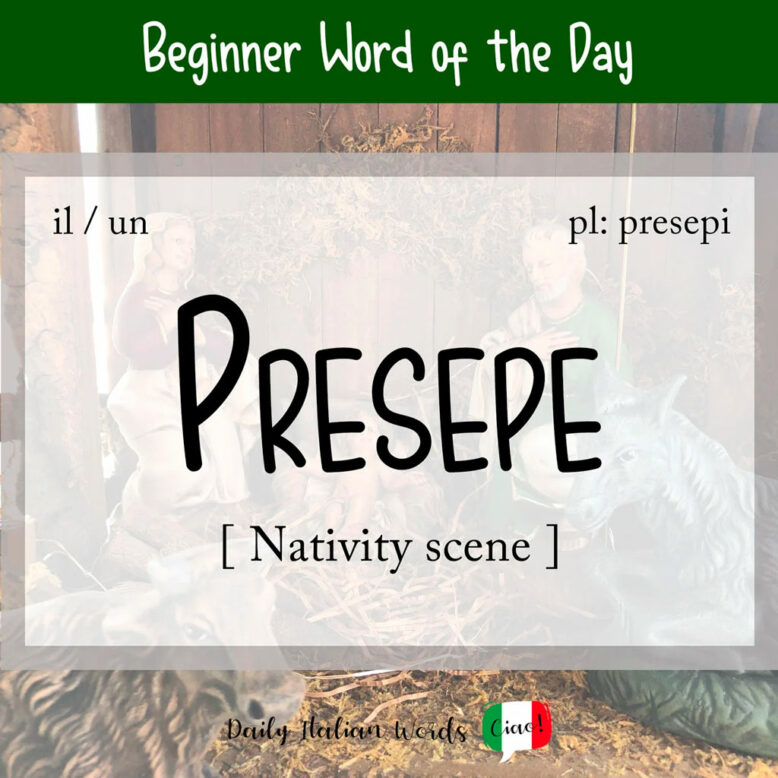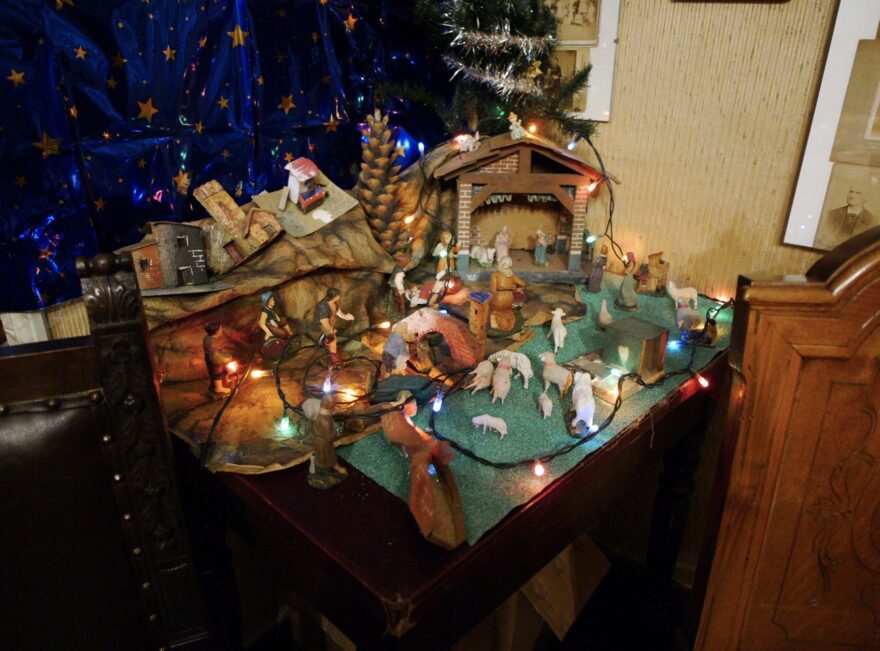The presepe (masculine, plural: presepi), or nativity scene in English, has been an integral part of the Italian Christmas tradition since the 16th century.

It is important not only to practising Catholics (cattolici) celebrating the birth of Christ, but to all Italians who want to embrace their past (passato) and heritage (eredità).
Interesting fact: Another word for presepe is presepio. They are both considered correct.

Presepi tend to appear in homes (case), churches (chiese) and even supermarkets (supermercati) on the Feast of the Immaculate Conception or L’Immacolata Concezione (December 8th) and aren’t taken down until the Epiphany or Epifania on January 6th.
Fare il presepe con la famiglia è sempre un momento speciale.
Putting up the nativity scene with the family is always a special moment.
The key players in any presepe are Mary (Maria), Joseph (Giuseppe) and the Baby Jesus (Gesù Bambino) but some of the more elaborate scenes may also include re-enactments of traditional life, complete with animals, buildings, and streets.
While the figurines themselves are usually made of terracotta, wood, marble or papier-mâché, many people enjoy building the landscape from scratch using natural materials such as moss, sand and rocks. Unlike the other characters, Gesù Bambino only ever joins the scene at midnight (mezzanotte) on Christmas Day (il giorno di Natale).
Another popular tradition is the presepe vivente (nativity play or Christmas pageant), a brief theatrical representation of the nativity story using human actors instead of figurines.
Heather Broster is a graduate with honours in linguistics from the University of Western Ontario. She is an aspiring polyglot, proficient in English and Italian, as well as Japanese, Welsh, and French to varying degrees of fluency. Originally from Toronto, Heather has resided in various countries, notably Italy for a period of six years. Her primary focus lies in the fields of language acquisition, education, and bilingual instruction.


